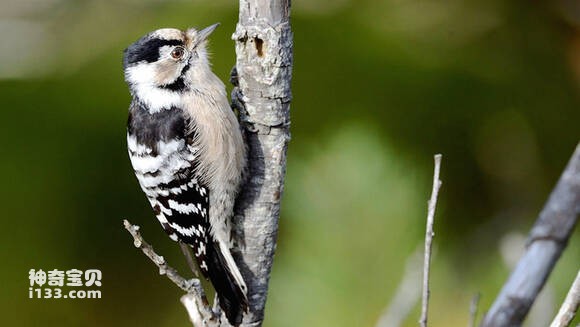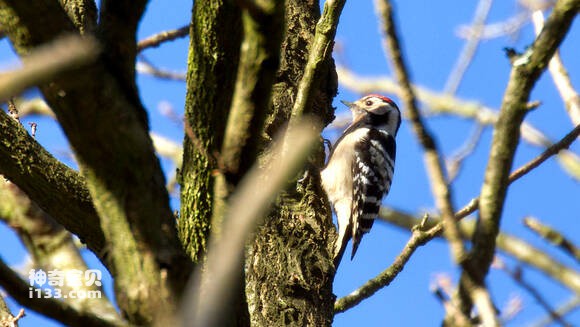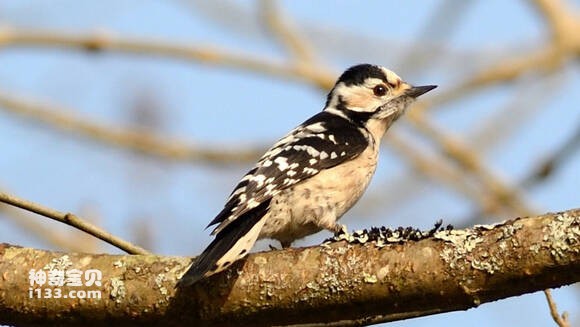Dendrocopos minor
IUCN
LCBasic Information
Scientific classification
- name:Dendrocopos minor
- Scientific Name:Dendrocopos minor,Dryobates mino,Lesser spotted woodpecker
- Outline:Climbing birds
- Family:
Vital signs
- length:13-18cm
- Weight:20-29g
- lifetime:No textual research information is available
Feature
Distribution and Habitat
World distribution of Micropicus: Albania, Algeria, Andorra, Armenia, Austria, Azerbaijan, Belarus, Belgium, Bosnia and Herzegovina, Bulgaria, China, Croatia, Czech Republic, Denmark, Estonia, Finland, France, Georgia, Germany, Greece, Hungary, Iran, Iraq, Italy, Japan, Kazakhstan, Korea, Latvia, Liechchi Dunston, Lithuania, Luxembourg, Macedonia, Moldova, Monaco, Mongolia, Norway, Poland, Netherlands, Montenegro, Portugal, Romania, Russia, SAN Marino, Serbia, Slovakia, Slovenia, Spain, Sweden, Switzerland, Tunisia, Turkey, United Kingdom, Ukraine.
The species is found in Xinjiang, Inner Mongolia, Heilongjiang, Jilin and Liaoning in China.
Small spotted woodpecker mainly lives in broad-leaved forests and mixed forests in the low hills and the plain at the foot of the mountains, and often travels to secondary forests on the forest edge, open forests along roads or on the side of the land, courtyards and orchards in autumn and winter.
Appearance
The male bird's forehead is stained white or brown, and the head and pillow are scarlet, some have white spots; The eyes are brown, the eyebrows are black, the ears are grey, the side of the neck is white, the upper back of the back of the neck is black, the lower back is white, with black stripes; Black covering on waist and tail; Tail black, lateral tail feathers white with black tip spots; The small and middle coverts on the wings are black brown, the large coverts are black with white stripes; Dark brown feathers with white stripes; The zygomatic lines are black, the whiskers and throat are grayish white, the foreneck to the thorax are grayish white or brownish gray, the thorax side and the two sides are grayish gray, with black longitudinal lines, the abdomen is white or grayish white. The female bird has an off-white forehead, black head to pillow, and the rest is similar to the male bird. The irises are reddish-brown, the mouth is gray-black or angular grey, and the feet ar
Details
The species Dendrocopos minor, Dryobates mino, and Lesser spotted woodpecker have three subspecies。

Small spotted woodpecker is a resident bird. It often acts alone except during the breeding period, feeding on the thick branches and leaves of trees. It mostly acts and roosts in the middle and upper layers of forests, and rarely acts and forages along the trunk. Sometimes they sing along the branches while foraging, and the sound is monosyllabic, like "zha-zha-zha". Flying fast, two wings a close, into a wave forward. Peckers with larger tapping sounds are slow and weak. It feeds mainly on adult and larva of longicorn, silverfish, coleoptera and diptera insects, ants, aphids, flies and other insects.

The breeding season of the small spotted woodpecker is from May to June. Mating and courtship began in early April. The male often chases the female through the forest canopy, making a series of short, loud calls called "ga-ga-ga-". Nest in the hole of broad-leaved trees, nest holes by male and female birds, generally choose to decay in the heart of the tree on the tree. Instead of using the old nest, you have to re-peck the nest hole every year. The hole is mostly round or nearly round, 3-9 meters high from the ground. The diameter of the opening is 2.6-3.2 mm, the inner diameter of the hole is 6-13 cm, and the depth of the hole is 16-22 cm. There are no upholstery inside the nest, only a few wood chips. Each clutch lays 3-8 eggs, white, oval. Male and female birds take turns incubating the eggs, which hatch for 14 days. The chicks are late sex, and the male and female parents feed the chicks together, and after about 21 days of feeding, the chicks can leave the nest to fly。

Listed on the International Union for Conservation of Nature (IUCN) 2012 Red List of Threatened Species ver 3.1 - Not Threatened (LC).
Protect wild animals and eliminate wild meat.
Maintaining ecological balance is everyone's responsibility!








